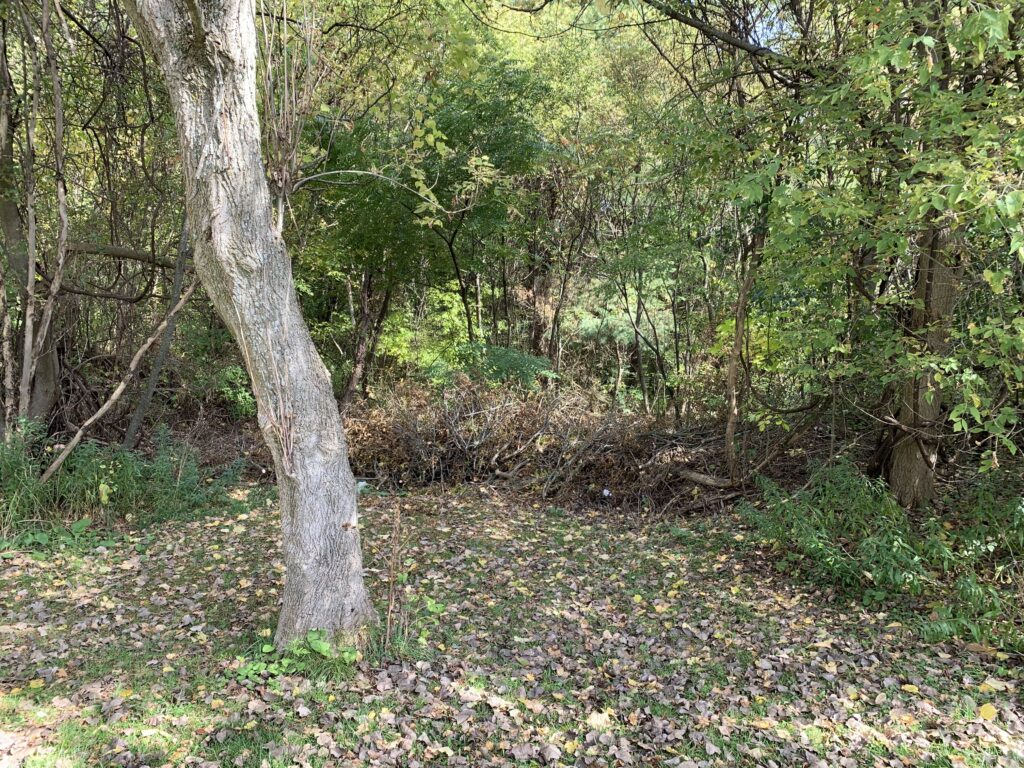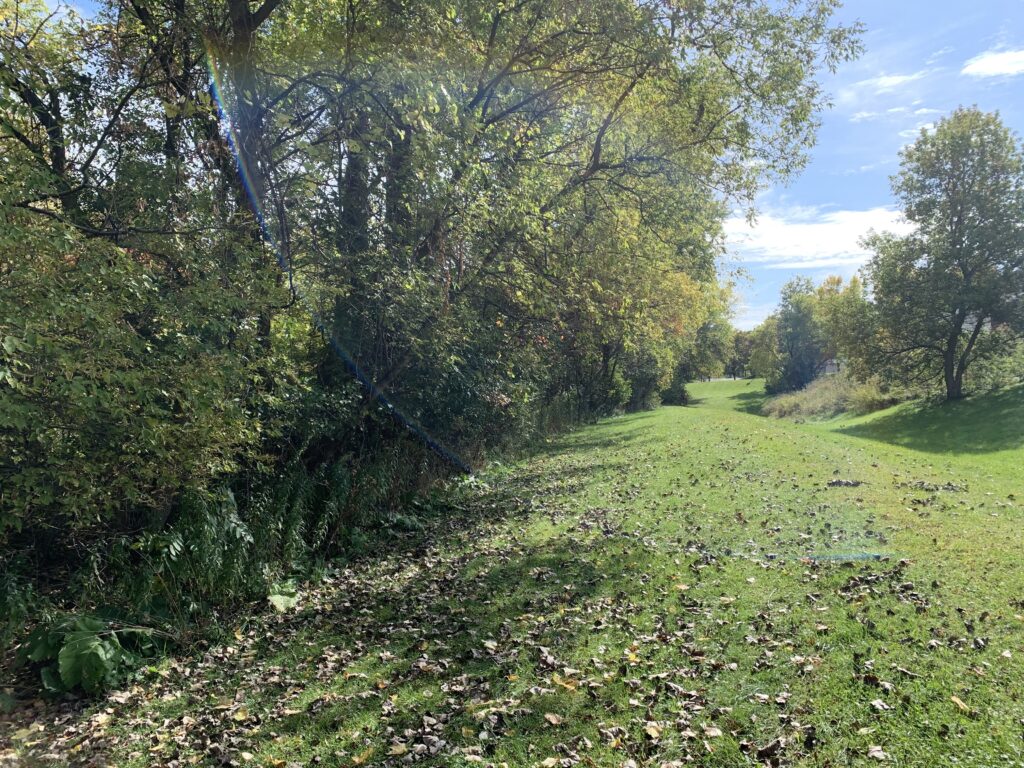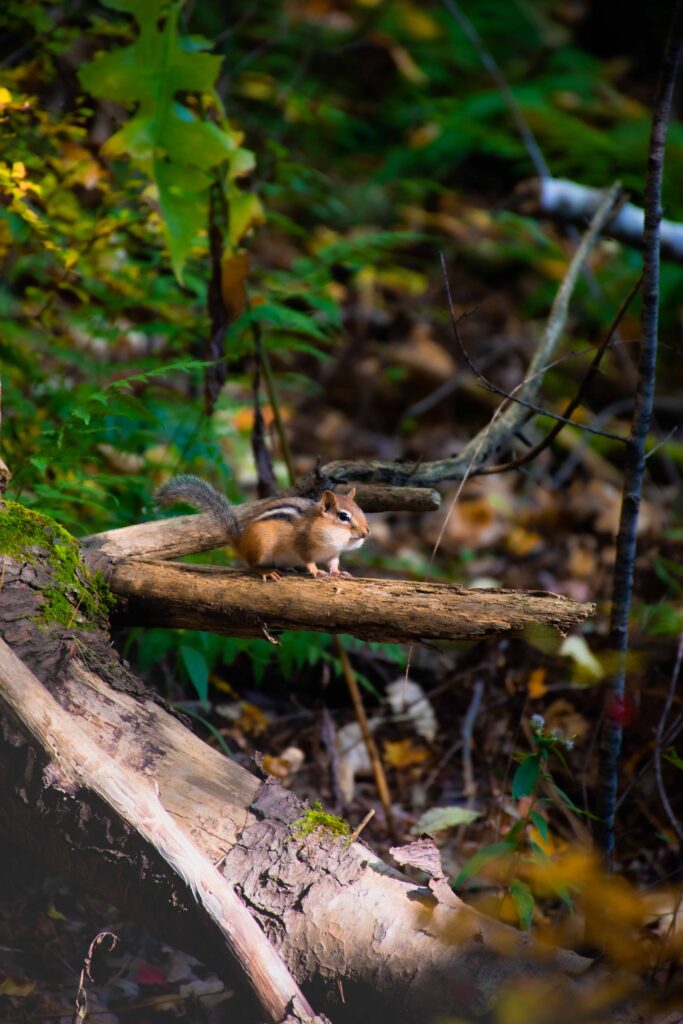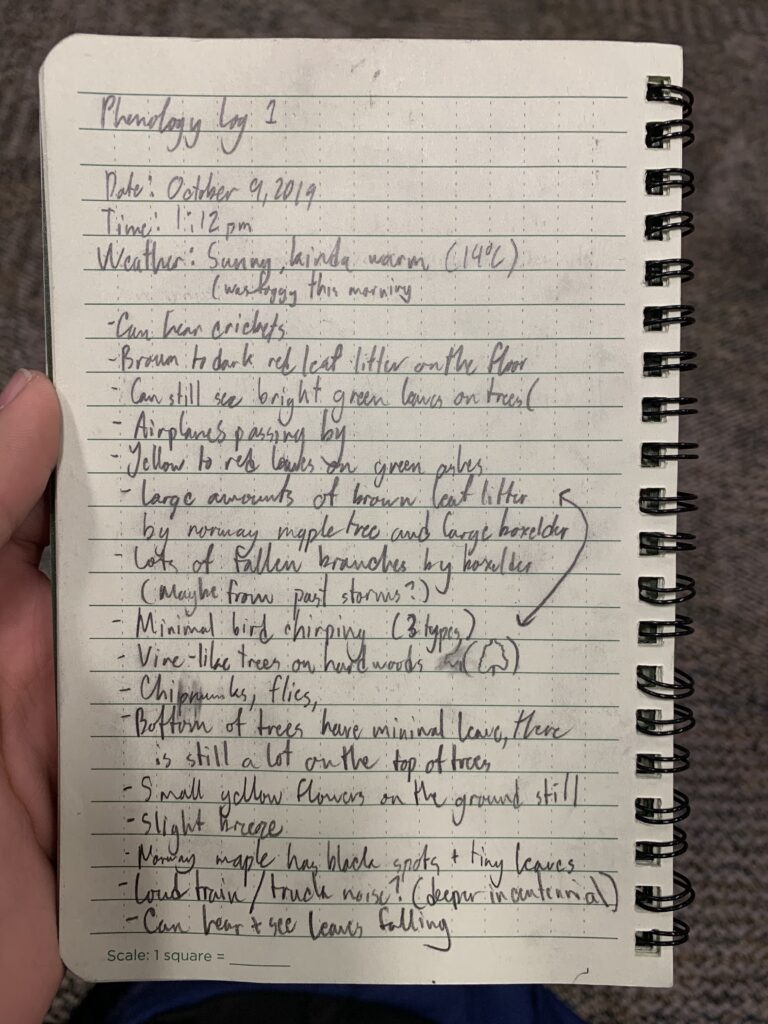Date of Visit: October 29, 2019, Time: 11:29am, Weather: Cloudy and windy (13°C)
My site is a transitional area from developed land to a natural area. So the organisms living there are vegetation and wildlife that can stand and thrive in both environments, I was able to find wildlife such as the Eastern Chipmunk and then 2 different species of birds, one of which I photographed, the black-capped chickadee, and one I was only able to record the sound of. I was also able to find small forms of vegetation such as camphorweed, which is a small yellow flower, the eastern daisy fleabane, a small white flower and a type of fungus that was growing on a tree, unfortunately I can’t seem to find a name for it. And the two flowers that I was able to find during my trip are known for living and thriving near disturbed places. Which shows that the area has been touched by humans and has become a transitional site between human to a natural area.
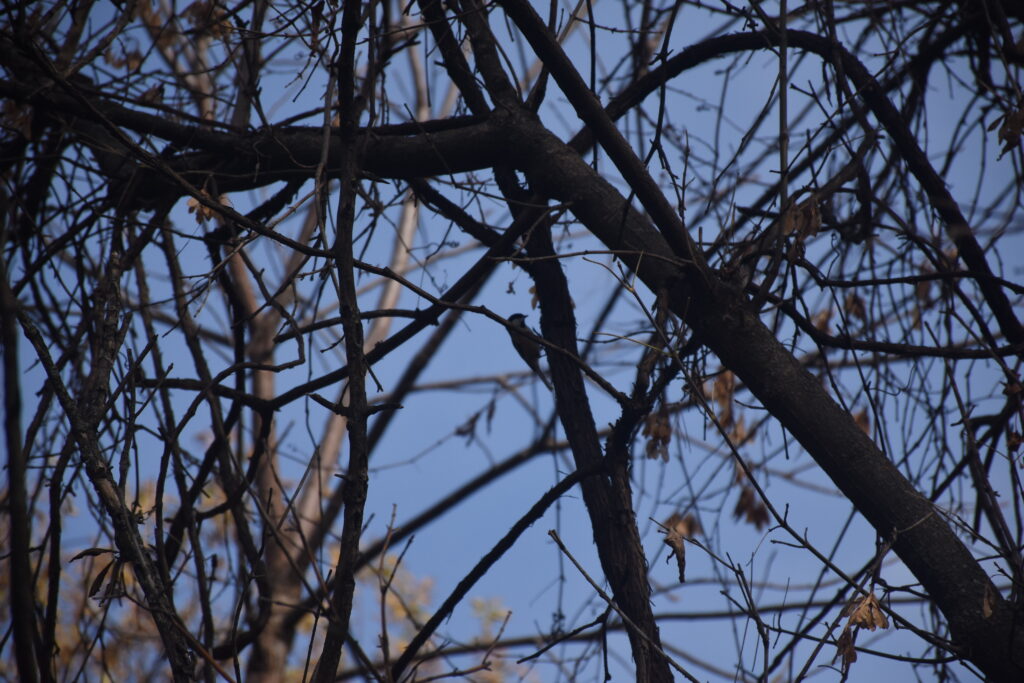

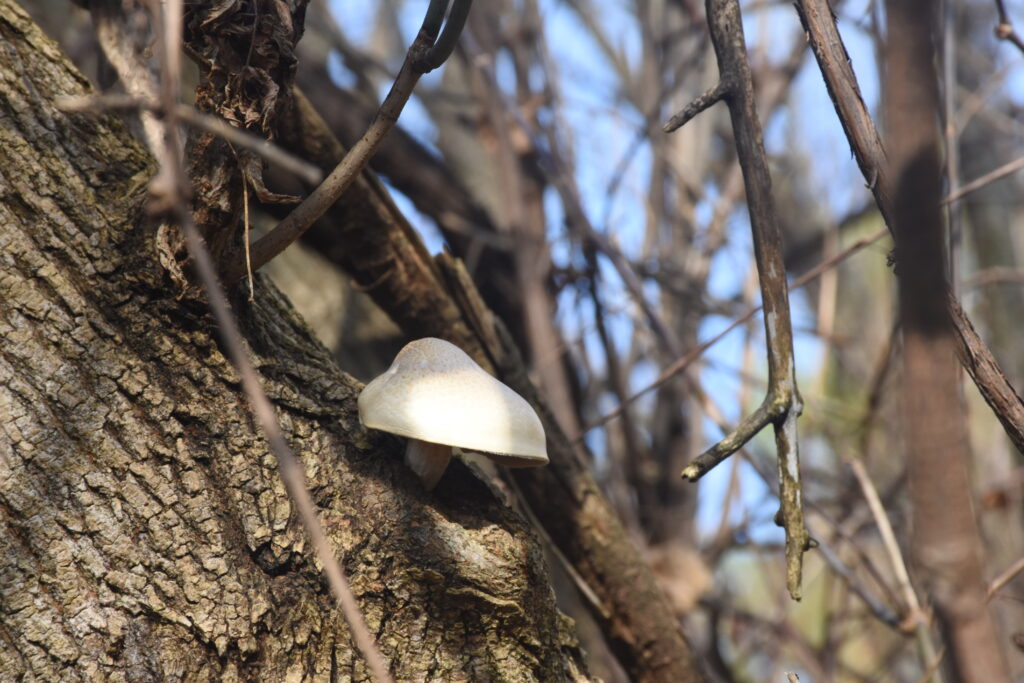
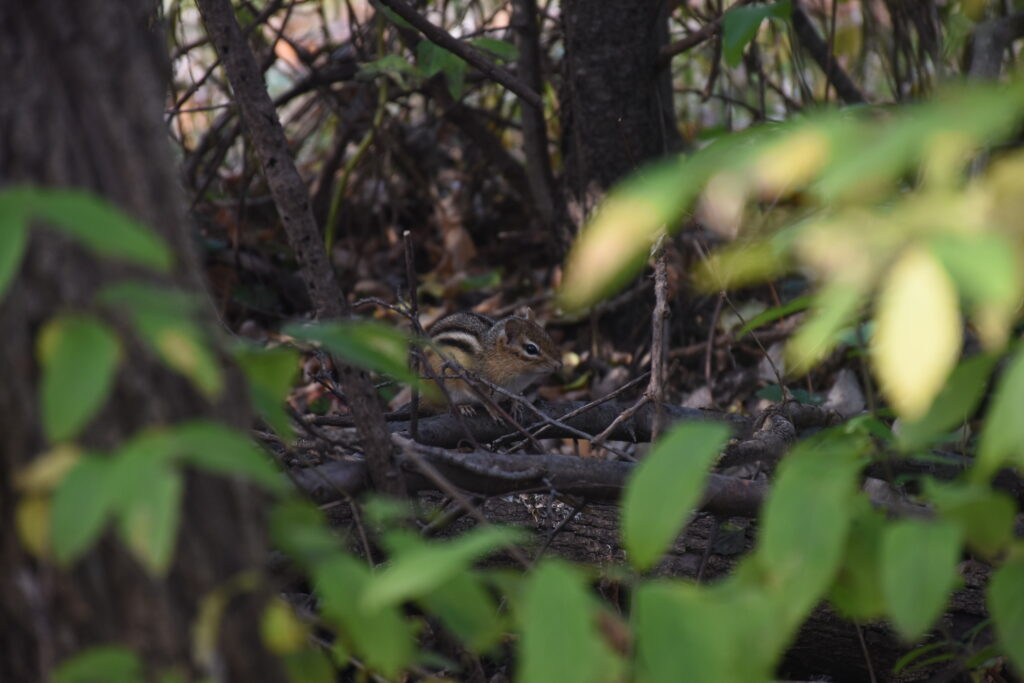
From the last time I visited the location, the biggest difference I saw were the trees that had little to no leaves, the boxelders, in particular, had no leaves at all left on their branches and they were all scattered around the ground around them. The only leaves that were left on the trees were the Norway Mapes and small short trees towards the entrance of the Centennial Woods Trail. Another big difference was the small short trees at the beginning of the trail that was pushed out towards the open area. Their branches were slanted towards the open area which may have been caused by the winds pushing the trees in one direction. Even further down the open area, trees and fern-like plants were slanted in the direction of the winds that were blowing. Wildlife was also very minimal in fact I saw no squirrels or chipmunks, and I did not hear any birds that day but that may have been due to the weather that day. The ground was also a weird dull color that may have been due to the abundance of dead leaves that were on the grass. The grass was covered in shriveled brown leaves and grew basswood like leaves. The opening at the deeper part of the open area was also bigger and had more grassland which also may have been due to the winds and possibly the rain that happened a few days before.
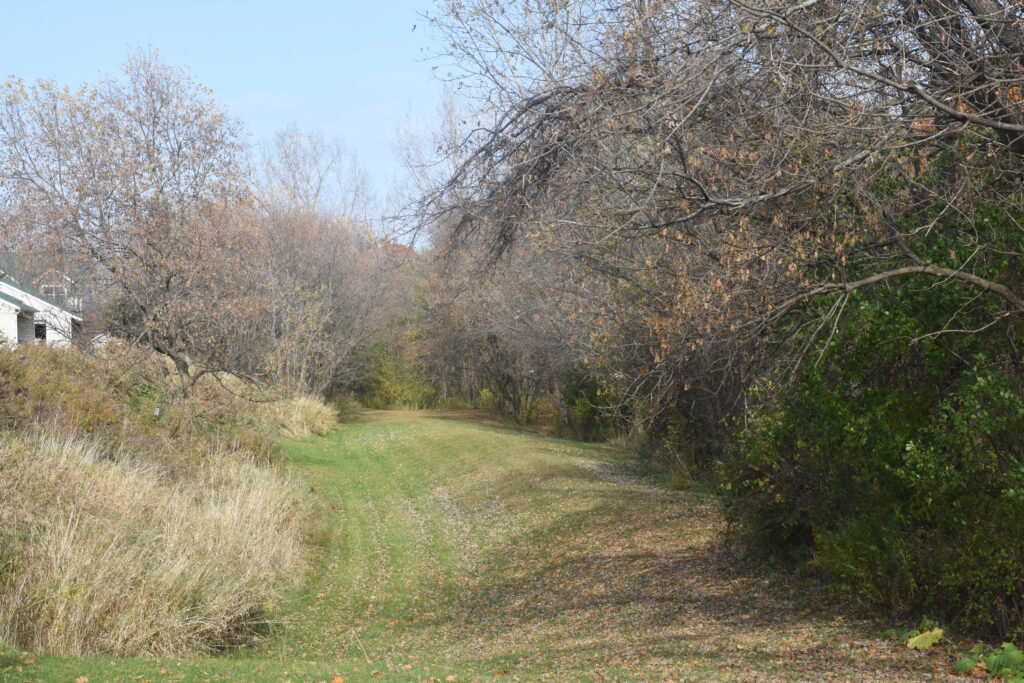
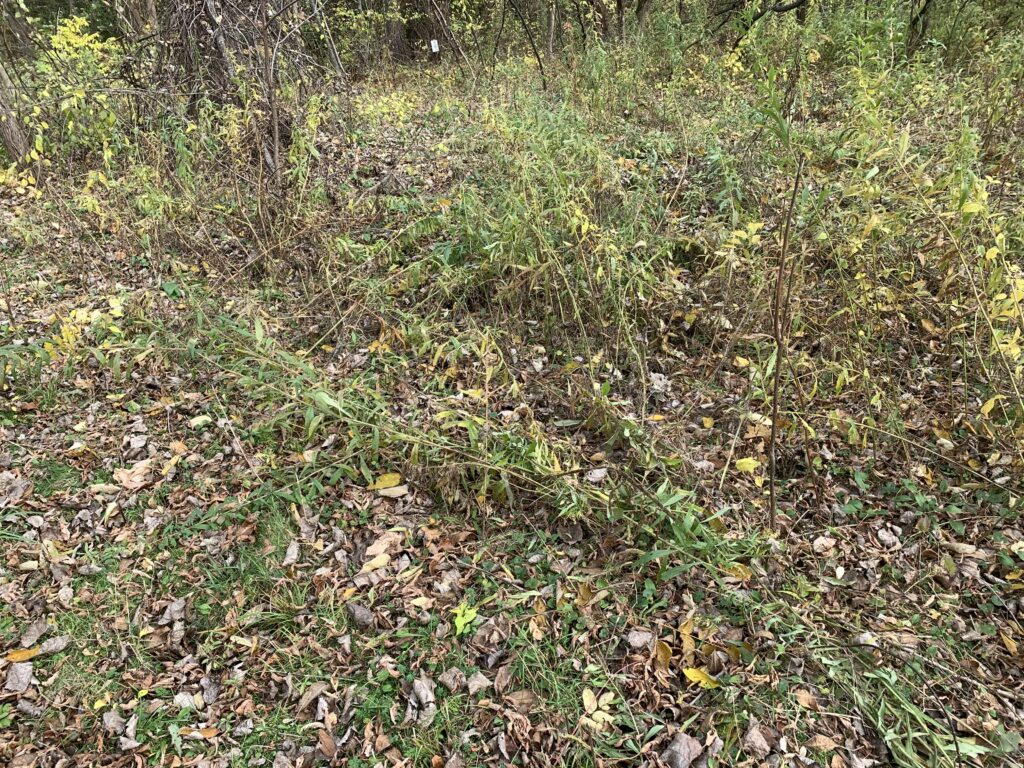
In terms of the soil and its topography, the open area had a lot more dry mud covering the ground this also includes the beginning part of the trail to Centennial Woods. And this could be due to the rain that the days preceding my visit had. The area also still had signs of human activity with the fallen branches being all located in one place but more were scattered around due to the storms and strong winds that were occurring during that week.
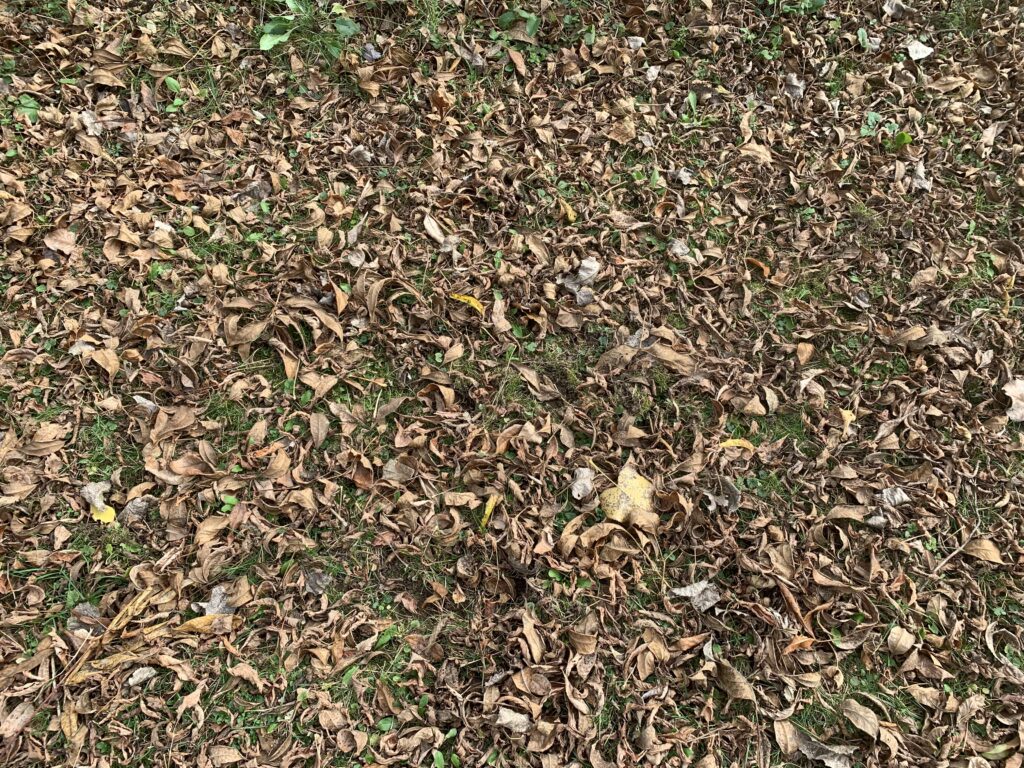
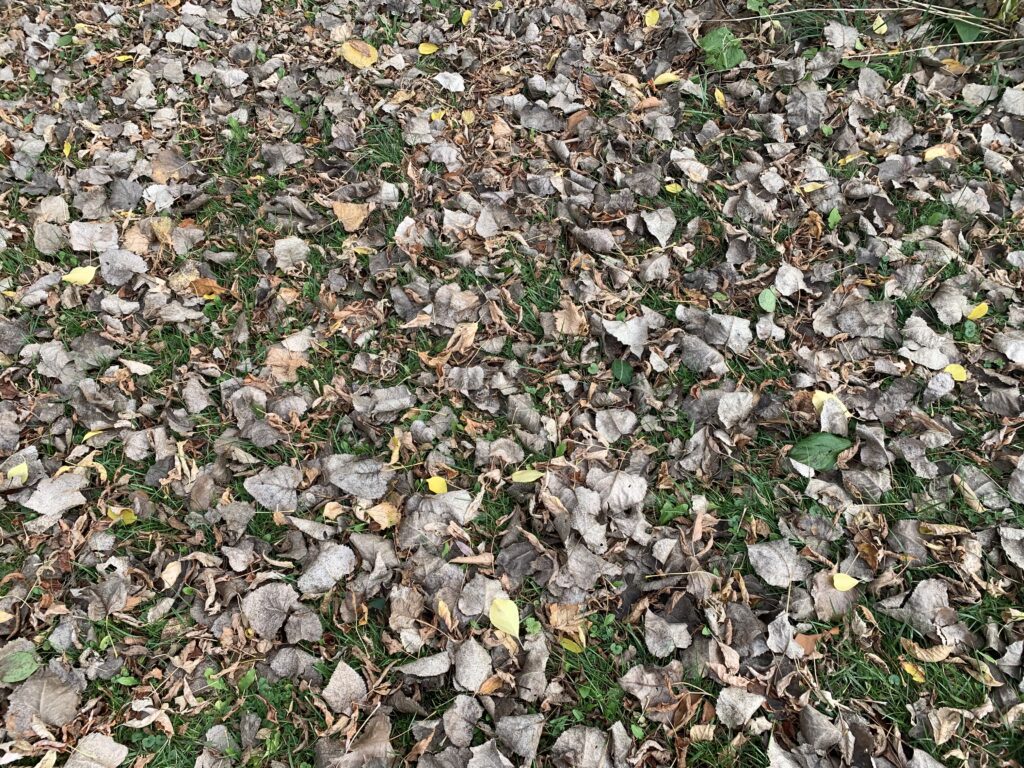
Prior to this visit, I created a map, as seen below, and this helped me gain a general idea of what areas I was most unsure of had. This then helped me take a closer look at what type of vegetation and what other things of interest there are. It helped me divide the area into smaller sections of what to expect and what to look out for. Such as the boxelder trees that seem to house more wildlife like squirrels and chipmunks than the other areas. One of these things of interest that I found were berries that I had not witnessed before. Unfortunately however, I was nto able to identify the berries or what kind of tree they were growing on. This also helped me find areas that I felt were most important such as the boxelder tree right in the middle of the opening towards the end and the opening at the very end which housed a lot more small vegetation and wildlife, as mentioned before, than I remembered. The map helps me more quickly find out what is new to the area from the last time I remembered and thus helps me make better observations based on the time of year.
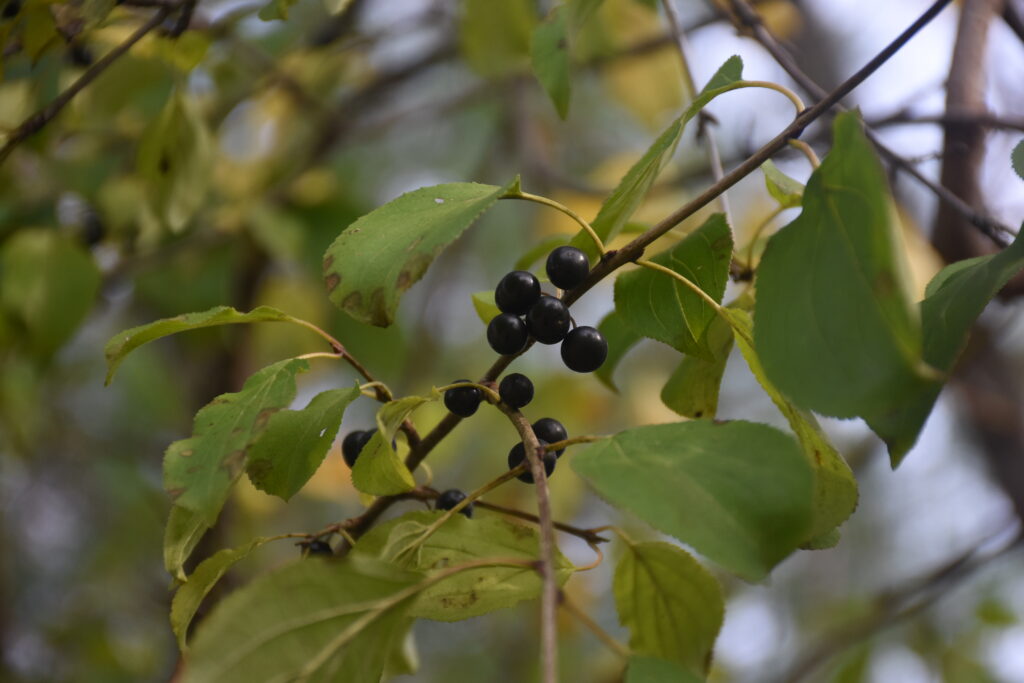
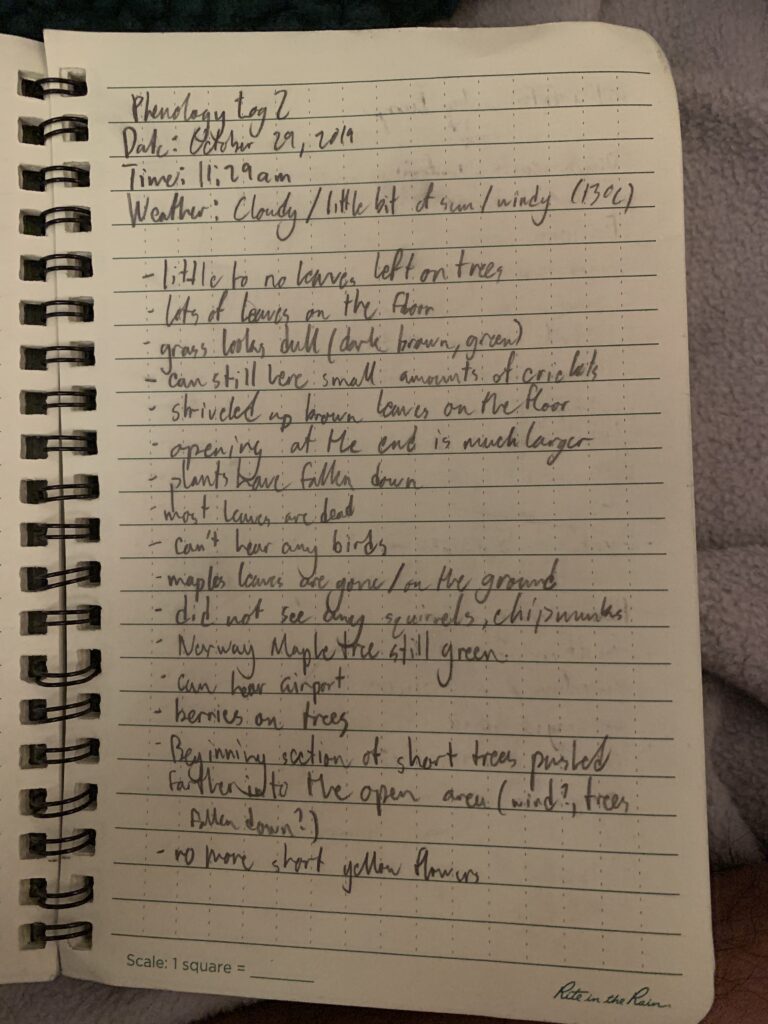
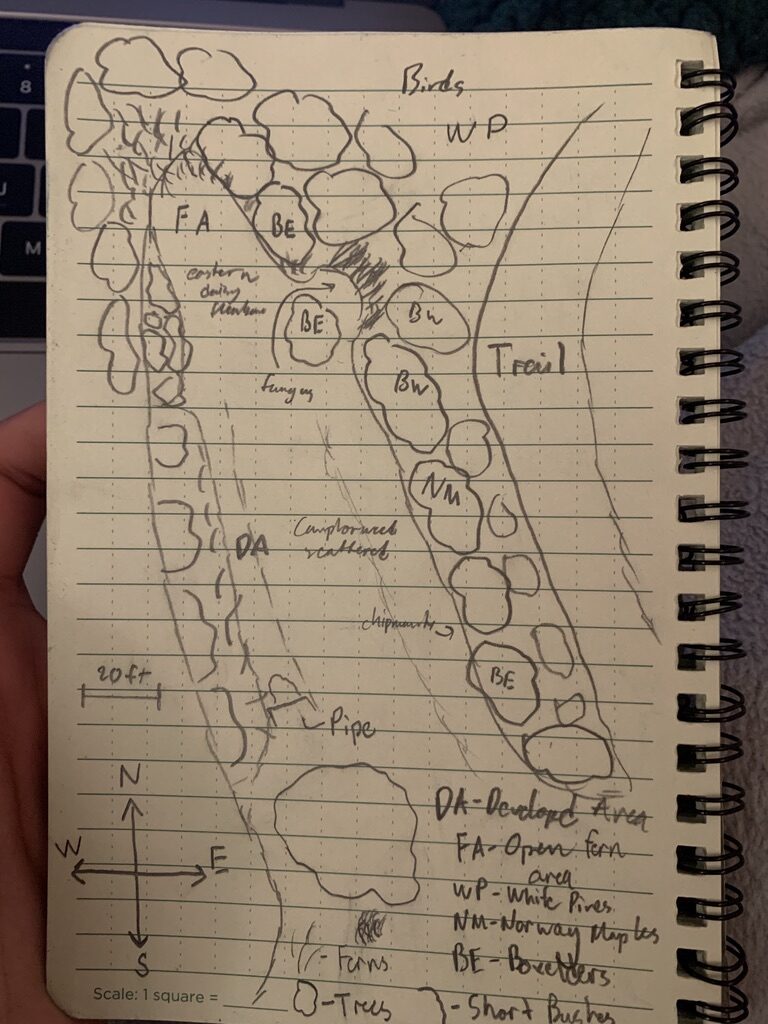
Until next time!

